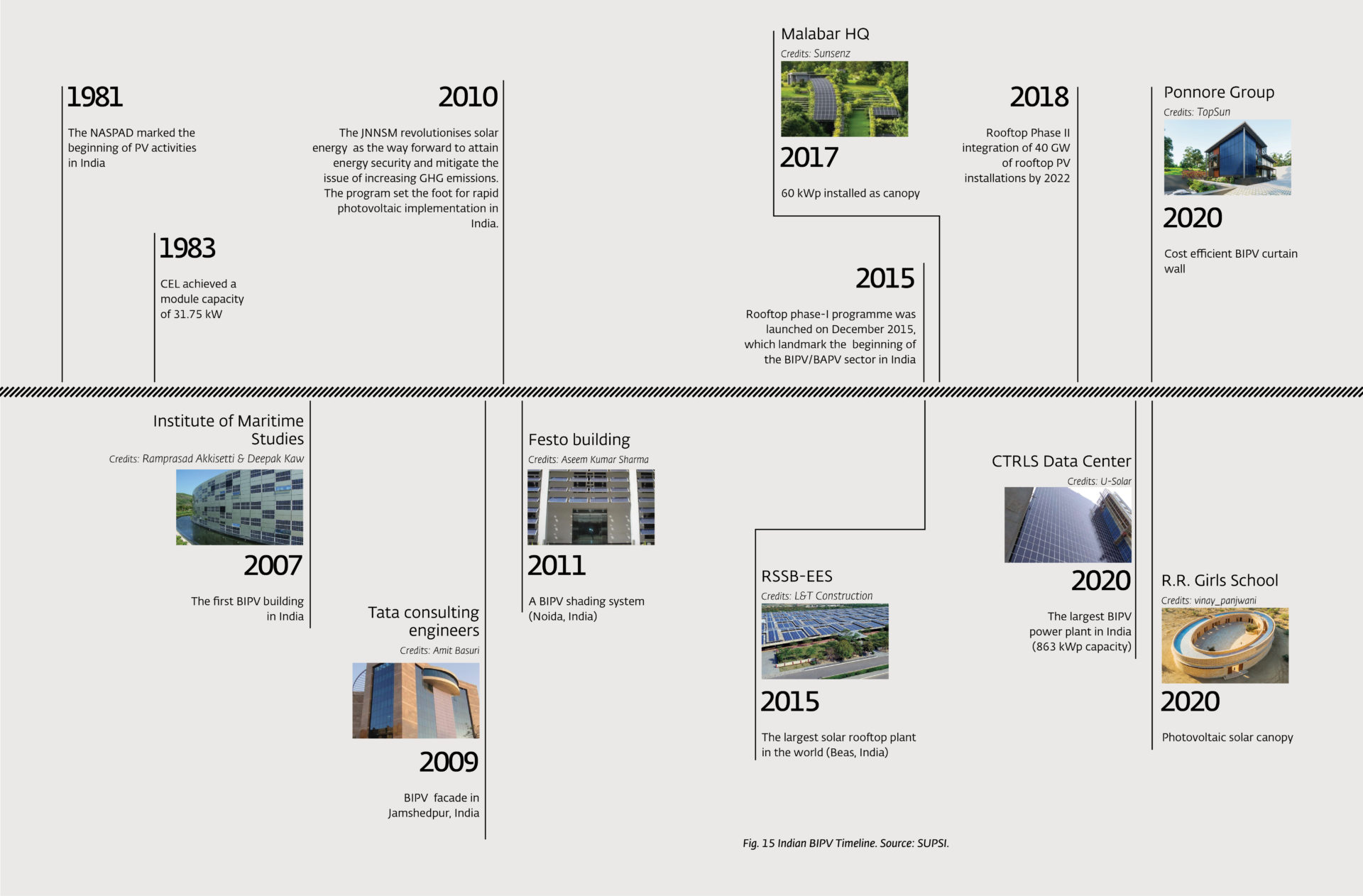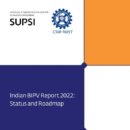9 May 2022

Indian BIPV Timeline. Source: SUPSI.
The “Indian BIPV Report 2022: Status and Roadmap” has been developed by SUPSI-ISAAC and CSIR-NIIST. It aims to provide an overview of the Indian solar market and insights to the stakeholders of the solar value chain by focusing on the integration of photovoltaic systems into the built environment. An overview of common building technology systems is discussed to support the construction value chain stakeholders. Furthermore, an overview of current scenario and deliberations on expected stakeholder efforts are also discussed for generating a critical roadmap. The crucial questions of business model, barriers and boundary conditions are illustrated with actual data from some case studies realized in the recent years in India.
The Indian BIPV Report 2022 will be released the 11th of August as part of the i-Connect events organised under the Ministry of Science and Technology, Government of India, to celebrate Azadi Ka Amrit Mahotsav (India’s 75th Independence Day Celebrations).
Before the event release, SUPSI-ISAAC and CSIR-NIIST have the pleasure to share the three main chapters of Status Report in the form of monthly newsletters. Chapter 1 “Photovoltaic sector and its potential in India”, reveals an overview of the Indian solar market by retracing historical milestones and the country’s evolutionary process, including policies, regulations, technological improvements and case studies. The potential market, the penetration of PV in the building sector and the financial schemes in solar buildings are presented in this first chapter.
If you are interested in the sponsorship options, please follow this link.
For more information, please contact the Swiss BIPV Competence Centre at pierluigi.bonomo@supsi.ch or by phone at +41 (0)58 666 63 51.




